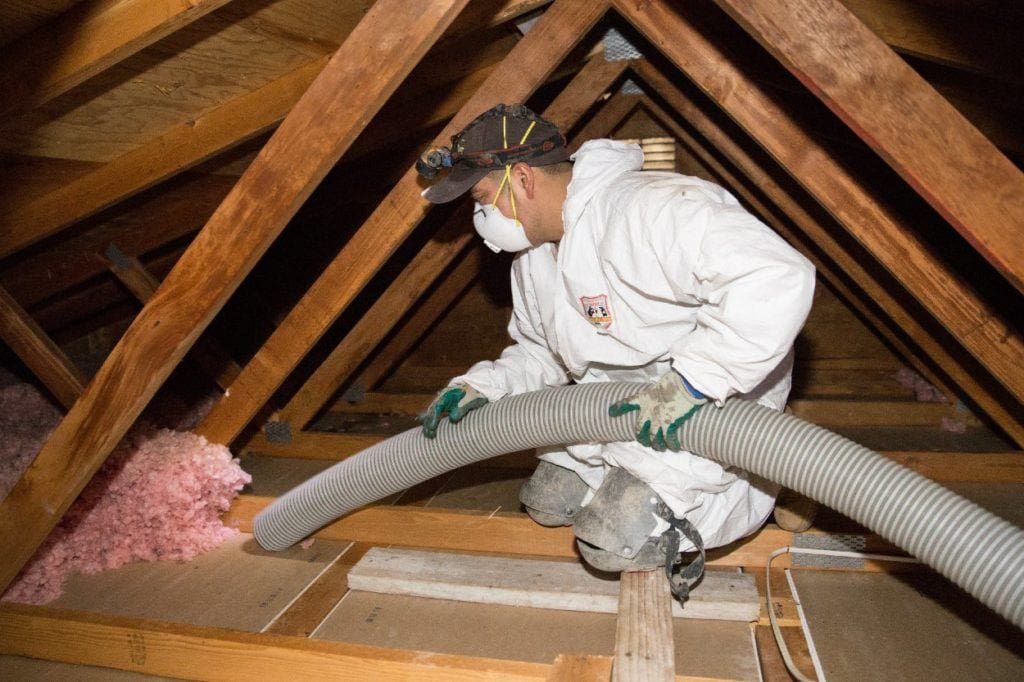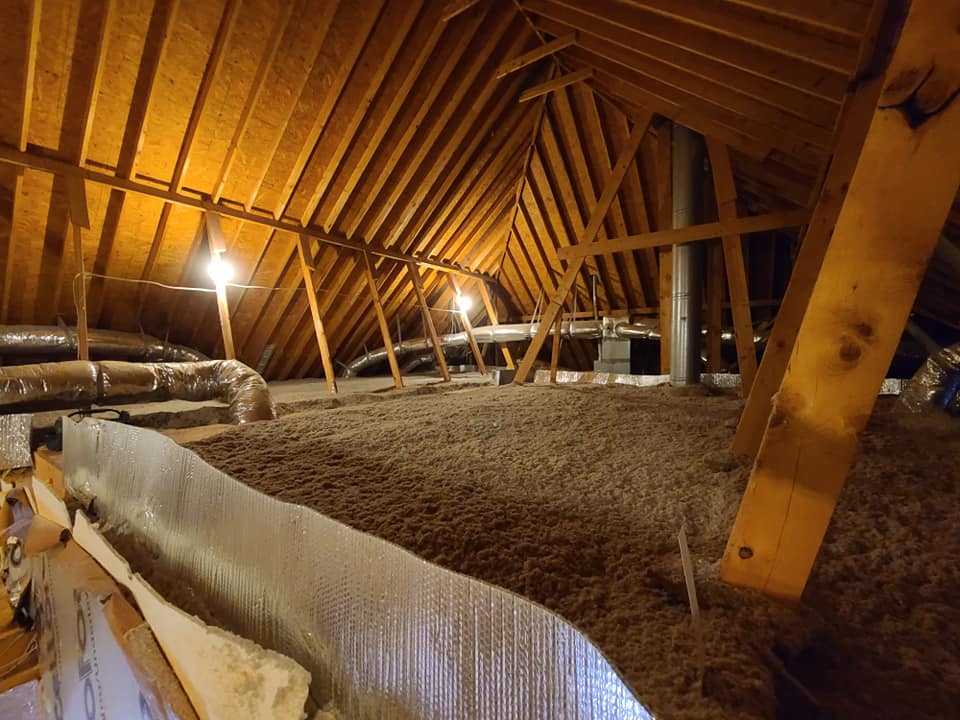How Attic Insulation DFW Can Change Your Home's Environment Control
How Attic Insulation DFW Can Change Your Home's Environment Control
Blog Article
Discover the Various Types of Attic Insulation and Their Unique Advantages for Your Home's Power Effectiveness

Fiberglass Insulation
Fiberglass insulation is just one of the most frequently used materials for attic room insulation as a result of its outstanding thermal efficiency and cost-effectiveness. Composed of small glass fibers, this product effectively traps air, producing a shielding barrier that helps preserve regular interior temperatures. Its high R-value per inch makes it especially effective at withstanding warm transfer, which is vital for power preservation in homes.
Installation of fiberglass insulation is fairly uncomplicated, often available in batts or loose-fill types, accommodating numerous attic room arrangements. Additionally, it is immune and non-combustible to wetness, reducing the danger of mold and mildew development. This toughness adds to its durability, making fiberglass a sensible lasting investment for homeowners.
In addition, fiberglass insulation is typically manufactured from recycled products, which improves its eco-friendliness. The material can also contribute to soundproofing, reducing sound transfer in between rooms. While it is essential to use safety gear throughout setup to stay clear of inflammation from the fibers, the overall benefits of fiberglass insulation, including power cost savings and environmental factors to consider, make it a prominent choice for improving attic performance and advertising a comfy living setting.
Spray Foam Insulation
Spray foam insulation is an extremely effective alternative for attic room insulation, recognized for its exceptional air securing and thermal efficiency. This cutting-edge insulation material is made up of a blend of isocyanate and polyol material, which, when combined, expands rapidly to load spaces and tooth cavities in the attic room space. Its ability to follow numerous surfaces makes sure a constant obstacle versus air leakages, dramatically reducing heat loss throughout chillier months and heat gain during warmer seasons.
One of the essential benefits of spray foam insulation is its high R-value per inch, which implies it gives exceptional thermal resistance in a fairly slim application. This is particularly beneficial in attic rooms where space is commonly restricted. In addition, spray foam can help lessen moisture build-up, lowering the threat of mold and mold development, which can be harmful to both the framework and indoor air high quality.
While the first cost of spray foam insulation might be greater than conventional choices, its lasting energy financial savings, combined with enhanced convenience and enhanced home worth, make it a beneficial investment for homeowners seeking boosted energy effectiveness. Attic Insulation DFW. On the whole, spray foam insulation sticks out as an efficient option for optimizing attic insulation
Cellulose Insulation

Cellulose insulation is a popular choice for attic insulation, mostly composed of recycled paper products treated with fire resistants. This eco-friendly option is known for its excellent thermal efficiency, effectively lowering warmth transfer in both summertime and winter season. The dense composition of cellulose enables it to load gaps and voids in attic room areas, giving a seamless obstacle against air leakages.
One of the considerable advantages of cellulose insulation is its capacity to stand up to mold and mildew and pests, owing to the fire retardant therapies used throughout manufacturing. Furthermore, it boasts a high R-value per inch, which translates into premium power efficiency. House owners can anticipate reduced heating and air conditioning costs as a result of enhanced insulation.
Setup is commonly achieved with blowing loose cellulose right into the wanted location, permitting a quick and effective process. This approach likewise minimizes disruption to the existing structure. Moreover, cellulose insulation has a reasonably low environmental influence, as its manufacturing procedure uses recycled materials, contributing to lasting structure methods.
Rock Wool Insulation
Amongst the different choices for attic room insulation, rock wool, additionally called mineral woollen, stands apart due to its remarkable thermal and acoustic efficiency. Made from all-natural or recycled products, rock wool is developed by visit the site thawing rock and review rotating it into fibers, resulting in a product that provides outstanding insulation properties.
One of the considerable benefits of rock wool insulation is its high R-value, which indicates its efficiency in standing up to warmth circulation. This characteristic not only improves energy efficiency yet additionally adds to maintaining a comfy interior temperature year-round. Additionally, rock woollen is naturally fire-resistant, making it a safer alternative for homes as it can hold up against high temperature levels without melting or releasing toxic fumes.
Furthermore, rock woollen insulation excels in soundproofing abilities, effectively minimizing sound transmission between areas and from outside sources. Generally, rock woollen insulation offers a detailed solution for enhancing energy performance, safety, and comfort in residential settings.
Glowing Barrier Insulation
Radiant barrier insulation works as an effective option for decreasing heat transfer in attics, especially in warmer environments. This kind of insulation jobs by reflecting convected heat far from living rooms, thereby decreasing the amount of warm that goes into a home during heat - Attic Insulation DFW. Generally composed of an extremely reflective material, such as light weight aluminum foil, glowing obstacles are set up in attic rooms, encountering the roof covering, where they can obstruct inbound warmth from the sunlight
The key advantage of glowing obstacle insulation is its capacity to reduced air conditioning expenses. By showing warm as opposed to absorbing it, radiant barriers can assist preserve a more stable indoor temperature level, reducing the work on cooling systems. This performance equates into lower read here energy bills and increased convenience for homeowners.
In enhancement to power financial savings, radiant barriers can likewise add to enhanced interior air high quality. By minimizing warm accumulation, they assist lessen humidity levels, which can protect against mold and mildew growth and enhance total air blood circulation. When set up correctly, glowing obstacle insulation can be a very useful enhancement to any type of energy-efficient home, making it a worthy factor to consider for house owners aiming to improve their attic insulation approach.
Final Thought
Finally, recognizing the different sorts of attic room insulation-- fiberglass, spray foam, cellulose, rock wool, and glowing barriers-- allows property owners to make enlightened decisions regarding power efficiency. Each insulation kind presents special advantages, such as remarkable thermal resistance, moisture monitoring, and sound depletion. By selecting the proper insulation material, considerable decreases in power costs can be accomplished, along with enhancements in interior convenience. Eventually, the appropriate choice adds to an extra sustainable living atmosphere and advertises total energy preservation.

In final thought, understanding the different types of attic room insulation-- fiberglass, spray foam, cellulose, rock wool, and glowing barriers-- enables house owners to make informed choices concerning power effectiveness.
Report this page